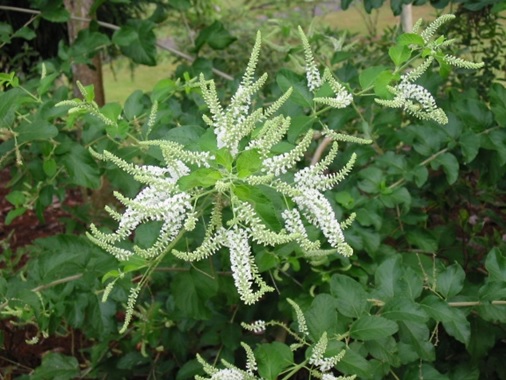A Garden for the Senses (Part 1)
While all gardens are filled with sights and sounds that anyone can enjoy, a sensory garden is one that is specially designed to offer a richer, wider range of sensory experiences. In fact, there are some gardens devoted to stimulating a single sense, like the Fragrant Garden at the Singapore Botanic Gardens, which focuses on smell.

You can find a large variety of plants that give off different scents in the Fragrant Garden at the Singapore Botanic Gardens. (Photo credit: Annabel Ng)
How does one create a sensory garden? Simply with the careful selection of plants, hard landscaping and any garden materials that appeal to all our five senses. When choosing plants, one thing to note is to include various plant growth forms – groundcovers, climbers, shrubs and trees. It is also good to look at how different plant parts – flowers, fruits and leaves, for instance – can stimulate the senses.
Let’s look at the many ways we can make our gardens more interesting, sense-wise! In this first of a two-part series, we shall cover the senses of sight, smell and sound.
Sight
Adding colours appeals to our sense of sight, and helps to brighten up the garden. Warm colours such as red inject more energy but may make the space look smaller, while the converse is true for cool colours, such as blue and purple, which are soothing.
You can consider analogous and complementary colour schemes when designing your garden. An analogous colour scheme involves any three adjacent colours on the colour wheel, which offers a harmonious look. A complementary colour scheme uses any two colours opposite to each other on the colour wheel, creating a vibrant contrasting look.
One visually attractive plant you could have in your garden is the River Tarenna (Tarenna fragrans). This native plant is often covered entirely in flowers when in season. Its flowers change colour as they age, giving it a mosaic appearance of yellow and white. What’s more, these blooms are fragrant too!

Movement is another element that you can incorporate in your garden, for added visual interest. The Dancing Plant (Codariocalyx motorius) has small leaflets that move in response to light. These movements are fast enough to be seen by the naked eye. It is thought that the plant evolved such leaf movement as a strategy to maximise light absorption by tracking the sun.
Smell
When designing a garden for scent, consider plants with flowers or leaves that have interesting aromas. For example, the Sawtooth Coriander (Eryngium foetidum) has scented leaves that smell like a stronger version of coriander. The leaves are commonly used in South East Asia and the Caribbean for cooking.

The Almond Bush (Aloysia virgata) from Argentina has extremely fragrant flowers that smell like almonds. This plant attracts birds and butterflies too. It is free flowering, which means it blooms throughout the year.

For your garden to be engaging all year round, do think about flowering seasons of the plants you wish to grow. Some species only produce sweet smelling flowers for certain short periods during the year, which mean that the garden may be less fragrant at other times.
To maximise the enjoyment of fragrant plants, grow them close to paths, and leave spaces between clumps of plants, so that visitors can easily access them and experience pulses of smell.
Sound
Through planting bird-attracting plants and placing wind chimes, you can liven up the acoustic environment of your garden.
Some plants can also contribute to the garden’s “soundscape”. As its name suggests, the Rattle Bean (Crotalaria retusa) has dried seed pods that make a rattling sound when shaken. Do note that this plant is poisonous if eaten.


Another idea is to plant grasses such as bamboos, which produce a soothing rustling sound in the wind. This could be explored in areas next to rest stops, such as a bench or shelter. The Timor Black Bamboo (Bambusa lako) is a more uncommon bamboo used in landscaping, and it has a striking appearance – the stems turn from green to glossy black as the plant matures.

However, bamboos tend to shed and require some maintenance. You may wish to consider planting clumping species of bamboo, as the non-clumping ones have horizontal rhizomes that grow outwards and may spread beyond the space you allocate for the bamboos.
These are just a few ways you can make your garden into one that excites in terms of sight, smells and sounds! Watch out for the second part of this series in the next issue, where we will talk about engaging the senses of touch and taste, and creating a multi-sensory experience through activities.
If you would like to learn more about the suggested plants, as well as other species you may encounter in other gardens, check out NParks Flora&FaunaWeb!
Text by Thaddaeus Cheng



.jpg)

Have views or comments on this article? Let us know via this form. If you would like to give us feedback on any other areas relating to our parks and gardens, please submit via https://www.nparks.gov.sg/feedback